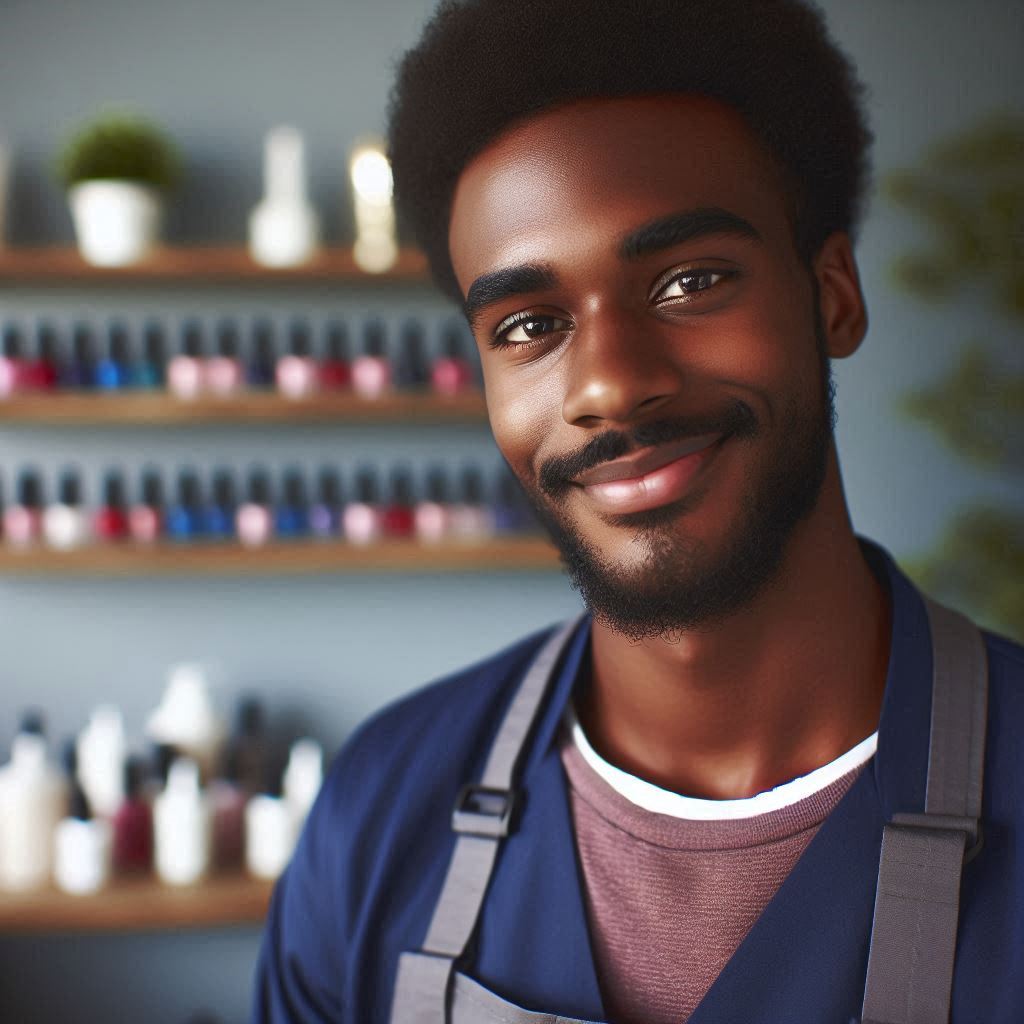Introduction
Nail salon hygiene and safety are crucial for client health and well-being.
Clean environments prevent infections and promote customer satisfaction.
Recent events have heightened awareness about cleanliness in nail salons.
Clients now prioritize hygiene when choosing their salons.
This trend emphasizes the importance of safety protocols and proper sanitation practices.
As customers become more educated about nail care, they seek salons that maintain high hygiene standards.
The demand for safer nail services has increased significantly.
Salons must adapt to these changing expectations to thrive in this competitive market.
This blog post aims to provide best practices for maintaining hygiene and safety in nail salons.
We will explore essential protocols to ensure a clean and safe environment for both clients and technicians.
By implementing these practices, salons can enhance their reputation and build customer loyalty.
Regular cleaning and disinfecting are foundational to salon hygiene.
Technicians should sanitize tools and workstations after each use.
Utilizing disposable tools, like nail files and buffers, can minimize cross-contamination risks.
Proper hand hygiene is vital for salon staff.
Technicians must wash their hands before and after each service.
Wearing gloves during procedures protects both clients and staff from potential pathogens.
Staff training is essential for maintaining high standards.
Regularly updating employees on hygiene protocols ensures compliance.
Encouraging staff to report any concerns fosters a culture of safety.
Transform Your Career Today
Unlock a personalized career strategy that drives real results. Get tailored advice and a roadmap designed just for you.
Start NowSalons should also ensure proper ventilation to reduce harmful chemical exposure.
Well-ventilated spaces enhance air quality and promote client comfort.
In fact, nail salon hygiene and safety are critical for client health and business success.
By adopting best practices, salons can meet increasing demands for cleanliness and safety.
Prioritizing hygiene creates a welcoming environment, ensuring clients return for services.
Staff Training and Certification
The importance of having well-trained staff members
Having well-trained staff members in a nail salon is crucial for ensuring client safety and satisfaction.
Proper training equips technicians with the knowledge and skills necessary to perform services safely and effectively.
It also boosts client confidence, encouraging them to return for more services.
The types of certifications and training programs available for nail technicians
Various certifications and training programs are available for nail technicians.
Many states require nail technicians to complete a state-approved program that covers hygiene, safety, and techniques.
Additionally, certifications from reputable organizations, such as the Nail Technology Program or the National Interstate Council of State Boards of Cosmetology, enhance a technician’s credentials.
These programs often include hands-on training, classroom instruction, and exams to validate knowledge and skills.
The need for regular refresher courses to stay updated on hygiene practices
Regular refresher courses are essential for nail technicians to stay updated on hygiene practices and industry standards.
The beauty industry continually evolves, introducing new techniques and products.
Refresher courses ensure that staff remains informed about the latest developments and best practices in hygiene and safety.
These courses often cover emerging trends, updated regulations, and advanced techniques, fostering continuous improvement among staff members.
Investing in staff training and certification creates a culture of safety and professionalism within the salon.
Well-trained staff members can identify potential risks and implement preventive measures, reducing the likelihood of infections and accidents.
Clients appreciate and trust salons that prioritize education and safety.
In short, investing in staff training and certification is vital for nail salons.
Transform Your Career Today
Unlock a personalized career strategy that drives real results. Get tailored advice and a roadmap designed just for you.
Start NowIt enhances service quality, boosts client confidence, and promotes a safe environment.
Regular refresher courses keep technicians informed and competent in hygiene practices.
By prioritizing staff training, nail salons can uphold the highest standards of safety and hygiene.
Read: The Science Behind Personal Training and Exercise
Sanitization Procedures
Maintaining proper sanitization procedures in nail salons ensures client safety and prevents infections.
Start by implementing strict protocols for cleaning tools and equipment.
Proper Sanitization Procedures for Tools and Equipment
Sanitize all tools after each use.
Begin by cleaning tools with soap and water to remove debris.
Then, immerse them in an EPA-approved disinfectant for at least 10 minutes.
Ensure the disinfectant covers all surfaces.
Rinse tools with clean water and allow them to air dry completely before storing.
Store sanitized tools in a clean, covered container to prevent contamination.
Difference Between Cleaning, Disinfecting, and Sterilizing
Understanding the difference between cleaning, disinfecting, and sterilizing is crucial.
Cleaning involves removing dirt and debris from surfaces.
Disinfecting reduces harmful microorganisms on surfaces, but it doesn’t eliminate all pathogens.
Sterilizing is the most thorough process, killing all forms of microbial life, including spores.
Nail salons should prioritize disinfecting tools and equipment, with sterilization reserved for specific items like metal implements.
Checklist for Sanitization Routines
Implementing a checklist can streamline sanitization routines.
Follow this daily, weekly, and monthly schedule:
Daily
- Clean and disinfect all tools after each use.
- Wipe down workstations with disinfectant.
- Change towels and linens between clients.
Weekly
- Deep clean and disinfect foot spas and pedicure stations.
- Check and restock disinfectants and cleaning supplies.
- Review and update sanitization logs.
Monthly
- Sterilize metal tools and implements.
- Conduct a thorough cleaning of the entire salon.
- Evaluate and refresh staff training on hygiene practices.
By adhering to these procedures, nail salons can promote a safe and hygienic environment for clients and staff.
Transform Your Career Today
Unlock a personalized career strategy that drives real results. Get tailored advice and a roadmap designed just for you.
Start NowRegular checks and staff education will help maintain these high standards consistently.
Read: Tips for Creating Effective Personal Training Programs
Ventilation and Air Quality
The significance of proper ventilation in nail salons
Proper ventilation is essential in nail salons.
It significantly enhances the overall air quality and customer experience.
Nail salons often use products that release fumes and chemicals.
Without adequate ventilation, these substances accumulate, creating an unhealthy environment.
The risks associated with poor air quality, such as respiratory issues
Poor air quality poses serious health risks.
Clients and technicians may experience respiratory issues, headaches, or dizziness.
Prolonged exposure to harmful fumes can lead to chronic health conditions.
Ensuring good air quality safeguards both clients and employees.
Tips on improving air circulation and maintaining a healthy environment
To improve air circulation, consider these tips:
- Install Exhaust Fans: Exhaust fans help remove harmful fumes quickly.
Position them near manicure stations and chemical storage areas for maximum effectiveness. - Open Windows and Doors: Whenever possible, open windows and doors to allow fresh air to enter.
This natural ventilation can significantly improve air quality. - Use Air Purifiers: Invest in high-quality air purifiers that filter out airborne toxins.
Choose models equipped with HEPA filters to capture small particles effectively. - Implement a Regular Cleaning Schedule: Keep the salon clean and free from dust and chemical residues.
Regularly cleaning surfaces reduces the chance of harmful particles becoming airborne. - Monitor Humidity Levels: High humidity can worsen air quality and promote mold growth.
Use dehumidifiers to maintain a comfortable indoor humidity level. - Educate Staff: Train employees about the importance of maintaining good air quality.
Encourage them to report any ventilation issues immediately.
In summary, effective ventilation and air quality management are crucial in nail salons.
By prioritizing these practices, you can ensure a safe and pleasant environment for both clients and staff.
Take action now to improve ventilation and protect everyone’s health.
Read: Nail Technician Job Outlook and Industry Trends

Gloves and Personal Protective Equipment
The importance of wearing gloves and other protective gear
Maintaining hygiene and safety in nail salons is crucial for both clients and technicians.
Wearing gloves and other protective gear is essential.
Gloves protect technicians from exposure to harmful chemicals, preventing skin irritation and allergic reactions.
They also reduce the risk of cross-contamination between clients.
The benefits of using disposable gloves for each client
Using disposable gloves for each client enhances safety.
Transform Your Career Today
Unlock a personalized career strategy that drives real results. Get tailored advice and a roadmap designed just for you.
Start NowDisposable gloves minimize the transfer of bacteria and viruses.
They create a barrier that protects both the technician and the client during services.
After each client, technicians should discard used gloves to ensure a clean work environment.
This practice helps maintain high hygiene standards and boosts client confidence in the salon’s commitment to safety.
Recommendations for selecting high-quality gloves and other protective equipment
When selecting gloves, choose high-quality options.
Look for gloves that are durable yet comfortable to wear.
Latex, nitrile, and vinyl gloves are popular choices.
Latex gloves offer excellent flexibility but may cause allergic reactions in some clients.
Nitrile gloves provide a strong barrier and are latex-free, making them a safe alternative.
Vinyl gloves are economical but may not offer the same level of protection.
Additionally, ensure that gloves fit properly.
Ill-fitting gloves can hinder dexterity and increase the risk of accidental tears.
Technicians should also consider using other personal protective equipment.
Face masks protect against inhaling harmful fumes and dust.
Protective eyewear shields against splashes and debris, further enhancing safety.
Basically, prioritizing the use of gloves and personal protective equipment in nail salons is vital.
It promotes a safe environment for both clients and technicians.
By following best practices, salons can uphold hygiene standards and foster a positive experience for everyone involved.
Read: How to Use Social Media to Promote Personal Training Services
Client Consultations and Health History
The necessity of conducting thorough client consultations
Conducting thorough client consultations is crucial for nail salon hygiene and safety.
Transform Your Career Today
Unlock a personalized career strategy that drives real results. Get tailored advice and a roadmap designed just for you.
Start NowThese consultations help establish trust and ensure a safe environment.
By understanding each client’s unique needs, nail technicians can provide tailored services that enhance client satisfaction.
The information that should be gathered during a health history assessment
During a health history assessment, gather essential information about the client’s medical background.
Ask about any allergies, skin sensitivities, or previous nail treatments.
Inquire about current medications, as some may affect nail health or reactions to products.
Document any relevant health conditions, such as diabetes or eczema, which can influence treatment choices.
This information enables technicians to adapt their services appropriately.
Suggestions on how to handle clients with specific health concerns or conditions
Handling clients with specific health concerns requires care and professionalism.
First, reassure clients that their health information is confidential.
Discuss any concerns they might have and provide clear explanations about the services you offer.
For clients with allergies, always use hypoallergenic products and perform patch tests when necessary.
If a client has a skin condition, consult with them before proceeding with any treatment.
Educate clients about aftercare and hygiene practices.
Encourage them to maintain their nail health at home by following simple guidelines.
Suggest regular check-ins to monitor any changes in their health status, ensuring that your services remain safe and effective.
In summary, thorough client consultations and health history assessments are vital for nail salon hygiene and safety.
By gathering relevant information and addressing specific health concerns, nail technicians can provide a safer and more satisfying experience.
Always prioritize client comfort and well-being to foster long-lasting relationships and repeat business.
Taking these steps enhances both the client’s experience and the overall reputation of your nail salon.
Chemical Safety and Product Usage
Educate readers on the potential hazards of chemicals used in nail treatments
Maintaining hygiene and safety in nail salons involves understanding the chemicals used in treatments.
Transform Your Career Today
Unlock a personalized career strategy that drives real results. Get tailored advice and a roadmap designed just for you.
Start NowNail products often contain harmful substances that can affect both clients and technicians.
Educating readers on these hazards is crucial for fostering a safe environment.
Provide guidelines for storing and handling chemicals safely
First, many nail products include chemicals like formaldehyde and toluene.
These substances can cause skin irritation, respiratory issues, and long-term health problems.
Clients and technicians should always be aware of these potential risks.
Next, proper storage and handling of chemicals are vital.
Store products in a cool, dry area away from direct sunlight.
Ensure that all containers are tightly sealed to prevent spills and contamination.
Technicians should always wear gloves and masks when applying chemical treatments to minimize exposure.
Label all products clearly to avoid accidental misuse.
Recommend safer, non-toxic alternatives for nail products
Additionally, consider investing in proper ventilation systems in the salon.
Good airflow helps reduce chemical buildup, ensuring a healthier environment for everyone.
Technicians should also read product labels thoroughly and follow the manufacturer’s guidelines for safe usage.
Finally, recommending safer, non-toxic alternatives is a great way to enhance safety in nail treatments.
Many brands now offer water-based polishes, organic nail products, and chemical-free removers.
Encourage clients to choose these options for a healthier experience.
Promoting non-toxic products helps reduce the salon’s overall chemical exposure.
By following these guidelines, nail salons can prioritize the health and safety of their clients and staff.
Educating everyone about chemical safety fosters a culture of care and responsibility within the salon.
Make safety a priority by implementing these best practices in your nail salon today.
Transform Your Career Today
Unlock a personalized career strategy that drives real results. Get tailored advice and a roadmap designed just for you.
Start NowEmergency Preparedness
The importance of being prepared for emergencies in the salon
Emergency preparedness is crucial in any nail salon.
Being prepared ensures the safety of clients and staff during unexpected situations.
Emergencies can occur at any time, making it vital to have a solid plan in place.
The necessary steps to take in case of accidents or injuries
First, salons should conduct regular training sessions.
These sessions educate staff on how to respond effectively to emergencies.
Encourage team members to participate in first aid and CPR training.
Knowledge of these skills can save lives during critical moments.
Next, establish clear protocols for accidents or injuries.
Designate a first aid officer responsible for handling emergencies.
Keep a well-stocked first aid kit accessible and regularly check its contents.
This kit should include bandages, antiseptic wipes, and other essential supplies.
List of emergency contacts and procedures to follow
In the event of an injury, staff should follow these steps:
- Assess the Situation: Determine the severity of the injury.
- Provide First Aid: Administer first aid as necessary.
- Call for Help: If the injury is serious, contact emergency services immediately.
- Document the Incident: Record details of the incident for future reference.
Create a list of emergency contacts, including local emergency services, poison control, and nearby hospitals.
Post this list in a visible area of the salon.
Ensure all staff members know where to find this information.
Finally, conduct regular emergency drills.
These drills help familiarize staff with protocols and build confidence.
Encourage feedback after each drill to improve procedures.
By prioritizing emergency preparedness, nail salons can create a safer environment.
Preparedness not only protects clients and staff but also enhances the salon’s reputation.
Transform Your Career Today
Unlock a personalized career strategy that drives real results. Get tailored advice and a roadmap designed just for you.
Start NowTake action today to ensure your salon is ready for any emergency.
Conclusion
Maintaining proper hygiene and safety practices in nail salons is crucial for the health and well-being of both customers and employees.
Regular cleaning, disinfecting, and sterilizing of tools, surfaces, and equipment are essential to prevent the spread of infections.
It is also important for salon staff to follow strict protocols for handwashing and wearing personal protective equipment.
By implementing these best practices, nail salons can create a clean and safe environment for everyone.
Prioritizing hygiene and safety not only protects clients from potential health risks but also enhances the reputation and success of the salon.
It is the responsibility of salon owners and staff to uphold these standards to ensure the highest level of service and professionalism.
As a reader, we encourage you to take these guidelines seriously and implement them in your nail salon.
By following these tips and recommendations, you can create a welcoming and safe space for your clients.
Remember that maintaining hygiene and safety is not just a requirement but a commitment to the well-being of those who trust you with their nail care.




